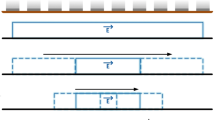Abstract.
Ion mobility spectrometry (IMS) has been used for over 30 years as a sensitive detector of organic compounds. The following is a brief review of IMS and its principles with an emphasis on its usage when coupled to mass spectrometry. Since its inception, IMS has been interfaced with quadrupole, time-of-flight, and Fourier-transform ion cyclotron resonance mass spectrometry. These hybrid instruments have been employed for the analysis of a variety of target analytes, including biomolecules, explosives, chemical warfare degradation products, and illicit drugs.
Similar content being viewed by others
Author information
Authors and Affiliations
Additional information
Electronic Publication
Rights and permissions
About this article
Cite this article
Collins, D., Lee, M. Developments in ion mobility spectrometry–mass spectrometry. Anal Bioanal Chem 372, 66–73 (2002). https://doi.org/10.1007/s00216-001-1195-5
Received:
Revised:
Accepted:
Published:
Issue Date:
DOI: https://doi.org/10.1007/s00216-001-1195-5




